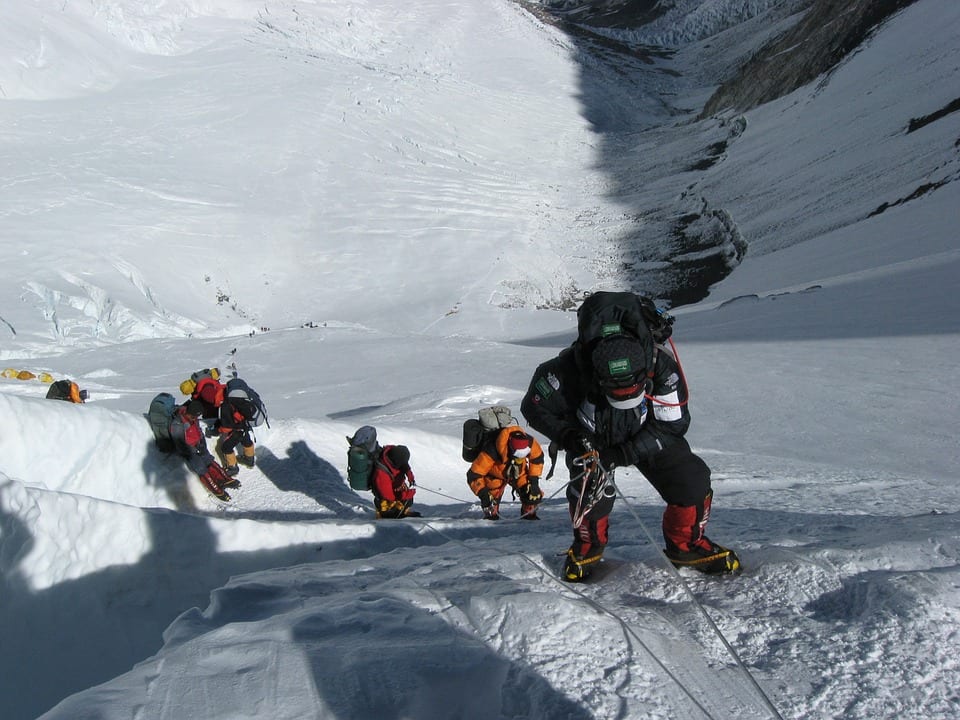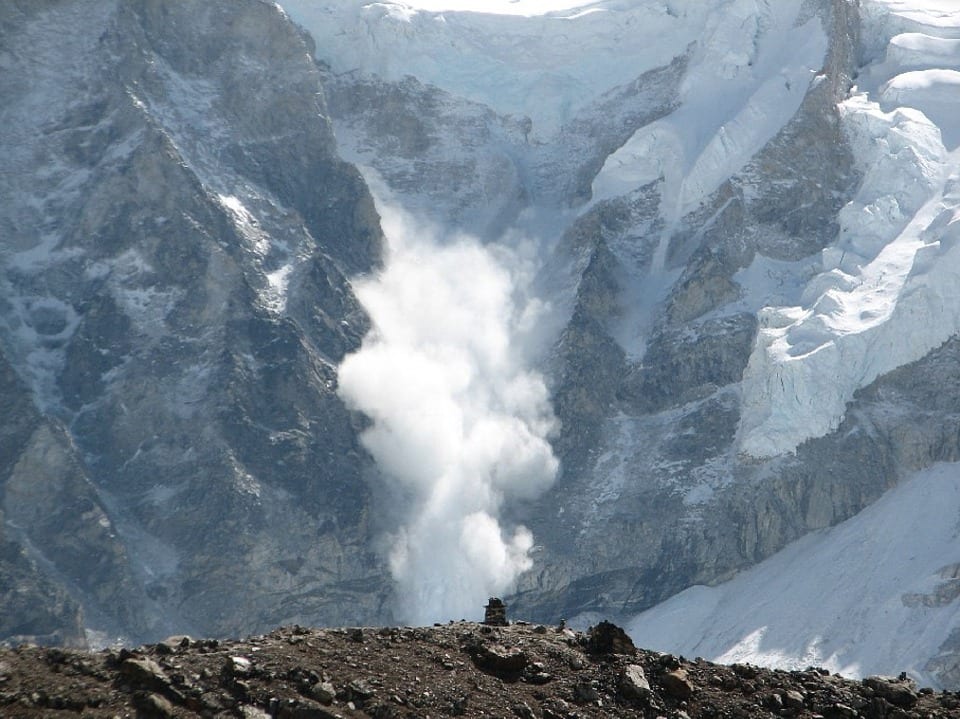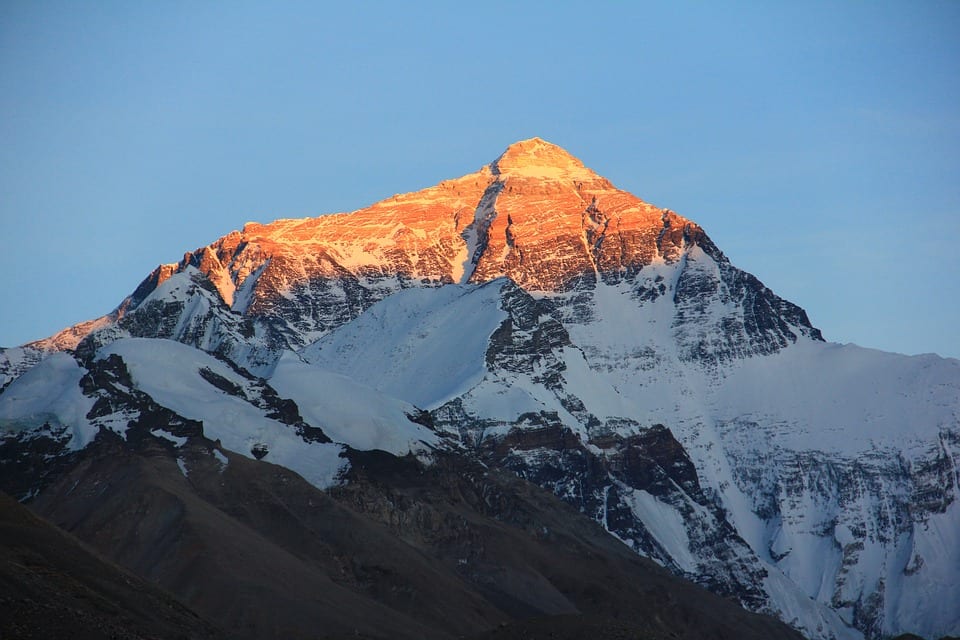Reading about the people who attempt (and sometimes die) summiting Mount Everest has become something of a morbid fascination for me – perhaps because I have surmised that people like that and myself are actually two different kinds of human.
I have no idea why a person would want to go where the air is too thin to breathe, where any number of obstacles could mean certain death, and where the path to victory is littered with the literal bodies of those who didn’t make it ahead of you.
Hundreds of people have died on the mountain (most of them are still there, too), and the surprising truth is that even though humans are getting more knowledgable about so many things, we’re also getting more likely to die in an attempt to reach the top of Everest.
Don’t believe me? Here are 4 pretty solid reasons why the ultimate mountaineering experience is more deadly than ever.
#4. Climate change is making Everest more unpredictable than ever before.

Image Credit: Pixabay
Mother Nature has always thrown curveballs at people climbing the mountain, but the trek has grown more unpredictable than ever, and professor Kent Clement says climate change is to blame.
“As temperatures rise, Everest’s thousands of feet of ice and water are becoming unstable, making the mountain even more volatile.”
Collapsing ice is a growing threat, as it can both fall on climbers and trigger avalanches that may affect people further down the mountain. In 2014, an avalanche killed 16 sherpas on the most dangerous section of the southeastern route.
#3. The human body isn’t meant to exist that high up, and people aren’t taking the time to train.

Image Credit: Pixabay
Most human beings cannot survive for long in high altitudes like those atop Everest, and too many uneducated and unaware individuals are attempting the feat. Travel medicine and doctor Christopher Van Tillburg explains what people should know, but often don’t, in order to recognize potentially deadly issues.
“Altitude illness impacts people in different ways, and we don’t really know who is susceptible until they have altitude illness. High-altitude pulmonary edemas can hit people suddenly – even highly trained, fit mountaineers.”
The altitude-induced edemas can be deadly if not treated – and sometimes even when they are.
#2. Unexpected factors can impair climbers’ judgement.

Image Credit: Pixabay
Hypoxia – a result of oxygen deprivation – drastically impairs one’s judgement, and is considered one of the most dangerous risks of scaling the mountain. It can make the most experienced, knowledgeable climber sit down “just to rest” when they know (and their group is telling them) that stopping means almost certain death.
“The higher you climb, the more your judgement gets impaired,” says Clement. “It’s amazing how hard it is for smart people to do simple math and memory problems at high altitudes.”
It can also have the opposite effect, causing people to keep going when good sense would have them turn around – logic is replaced by stubborn determination (also called “summit fever”).
Protocol demands that every group decide on a “turnaround time,” which is a time when they will abandon their trek, even if they haven’t summited, in order to get back to base camp and save everyone’s life.
“Every time you ignore your turnaround time, you’re putting yourself at risk. Professional guides are also supposed to follow these rules, but they get stuck in cognitive traps, too, because the more clients they get to the top, the more clients they’ll have next season.”
Go with people you trust, and know what you’re getting into before you ever set foot in the danger zone.
#1. There’s no way to summit Everest and be completely safe while doing so.

Image Credit: Pixabay
The best way to survive Everest’s “death zone” is proper training, excellent fitness, and organization, but plenty of climbers who did everything right never made it home.
“Training doesn’t really offset objective hazards like rock falls, ice falls, avalanches, and earthquakes,” comments Van Tillburg. “And while we have medicine for altitude illness to help people acclimatize, we don’t have medicines for the myriad other risks on Everest.”
You won’t find me up there any time soon, and if you’re going, take heed!






